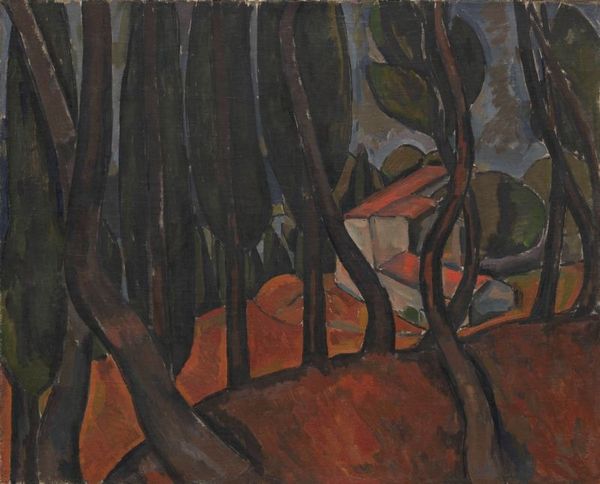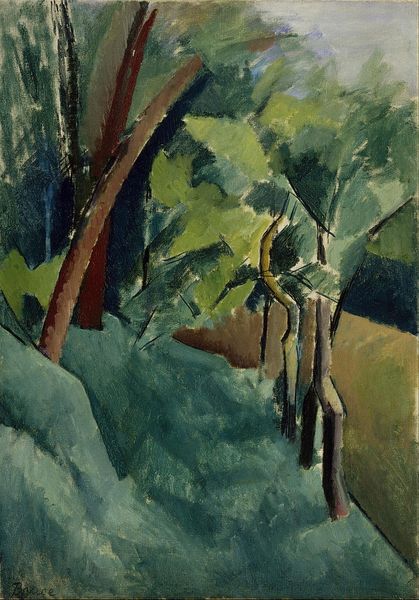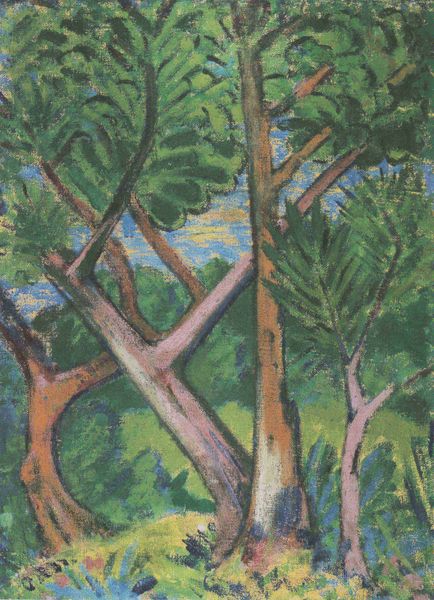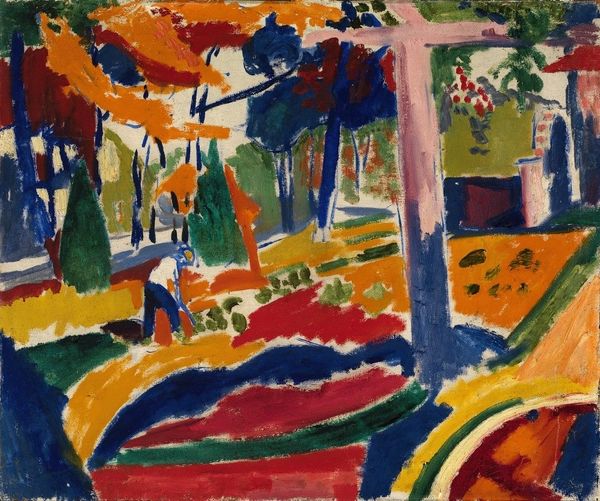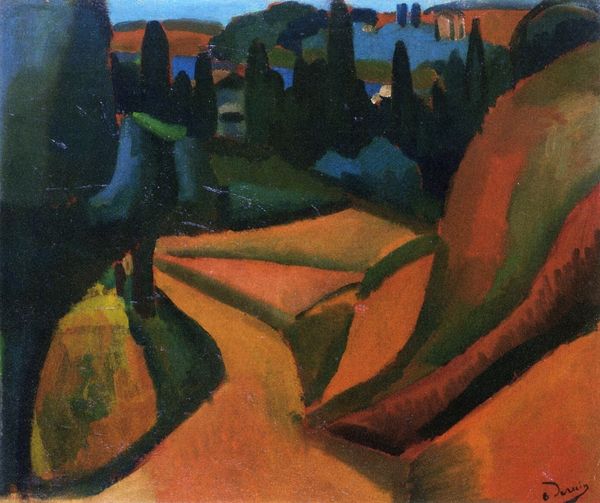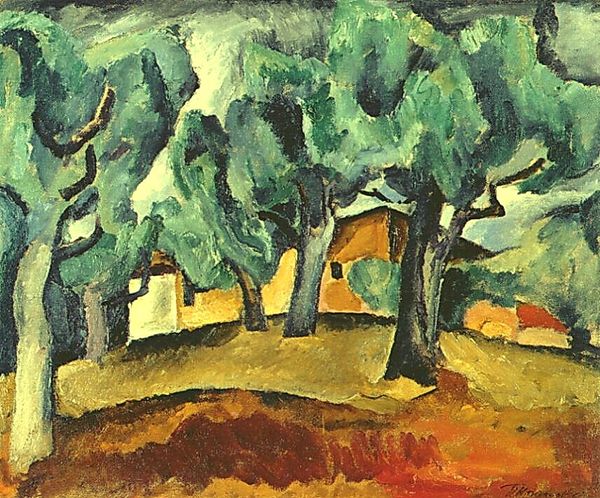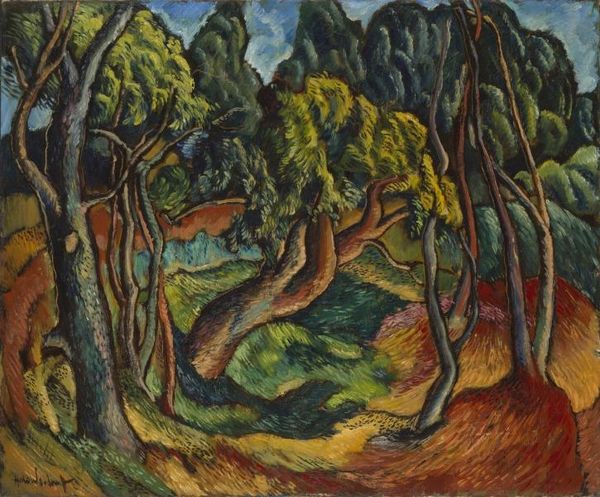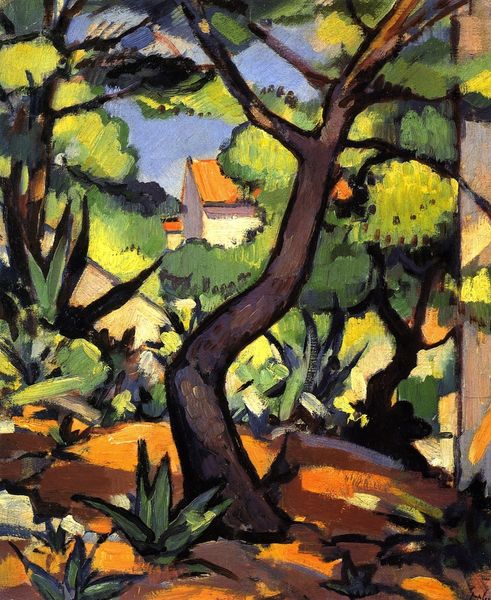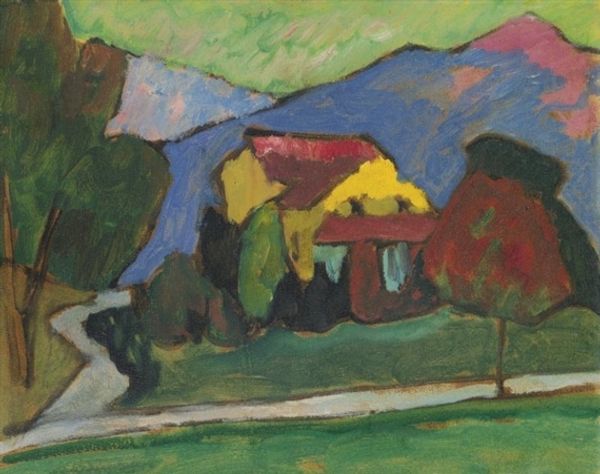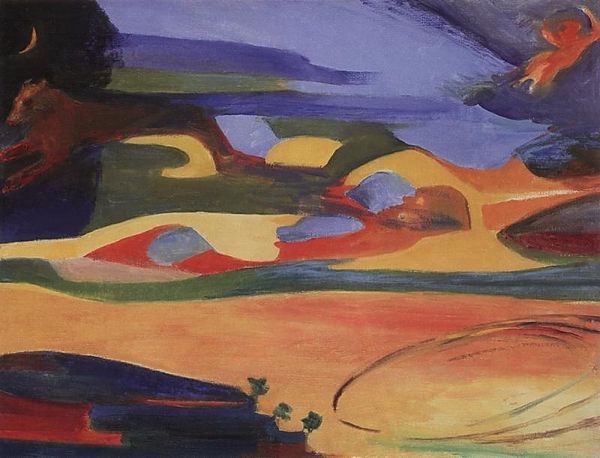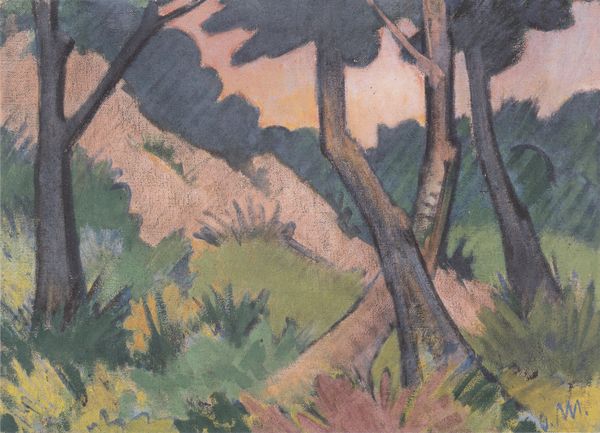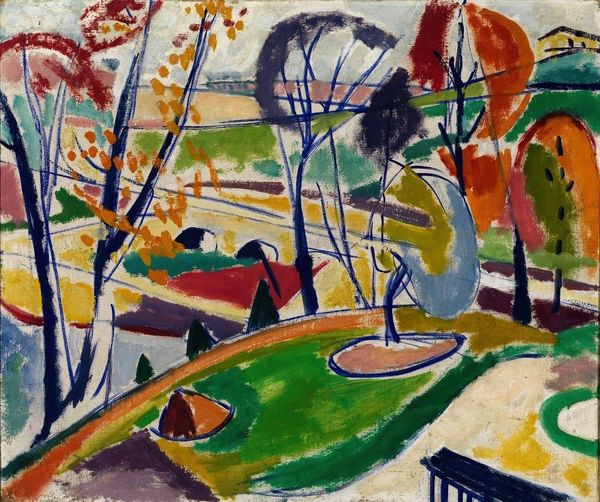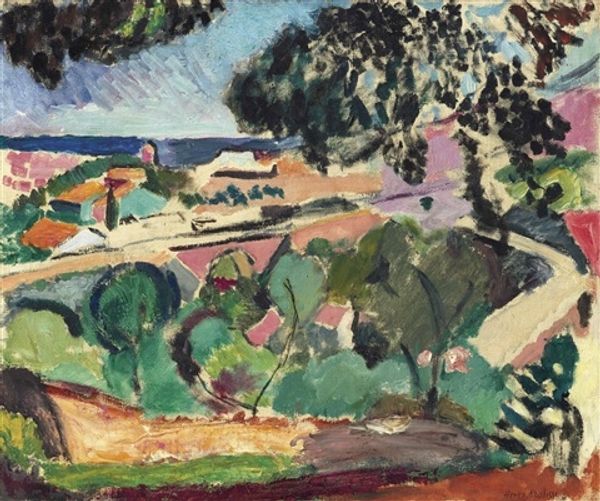
painting, oil-paint
#
tree
#
garden
#
painting
#
oil-paint
#
landscape
#
figuration
#
forest
#
expressionism
#
paint stroke
#
painting painterly
#
park
#
cityscape
Dimensions: 47 x 59.5 cm
Copyright: Public domain
Curator: August Macke's "Riders and Walkers at a Parkway," painted in 1914, offers a glimpse into the vibrant urban life of its time. Editor: It's initially quite striking – almost overwhelmingly chromatic! The color choices give it a frenetic, unsettling quality, even as it depicts a serene park setting. Curator: Macke was a key figure in German Expressionism. He captured modern life not only through representation but through explorations of color and form as expressions of emotional states. One can read his work as reflecting the unease felt across Europe, at the precipice of World War I. This idea of motion and social progress was under strain at the time. Editor: Looking closer, I notice how the paint is applied. These broken, impasto-like strokes almost deconstruct the image. It moves from a legible scene to one made of pure light and pigment, drawing attention to the artificiality of painting, it’s inherent surface. The people and trees become secondary to these bursts of color and light. Curator: Absolutely. Macke used this heightened, abstracted visual vocabulary to negotiate how humans were increasingly detached from traditional ways of life. The figures seem isolated from each other and the landscape around them, reflecting on alienation and individuality. Consider that public parks, becoming common during this era, represented a negotiated shared space within a rapidly changing and fragmenting society. Who was welcome? Who defined the rules? Editor: True. Though the composition leads the eye from left to right in a seemingly natural progression, this is undercut by the jarring angles and seemingly random placement of contrasting hues. It creates tension, a sense that something isn't quite right. The green and purplish brushstrokes are very bold choices, that refuse to render anything realistically. Curator: So the painting is then about visual language and cultural conditions. A visual response to societal anxieties, expressed through abstract representations that comment on alienation and shifting norms. Editor: Exactly. It presents us with a fractured but evocative surface—a record of the artist grappling with representation itself. The vibrant and unstable surface reflects back to the conditions of its making: art struggling to come to terms with change and, more importantly, how change is sensed.
Comments
No comments
Be the first to comment and join the conversation on the ultimate creative platform.
